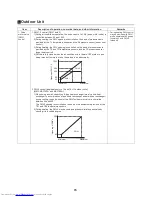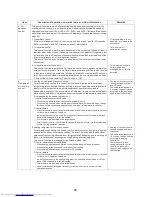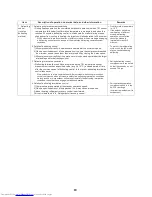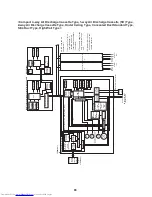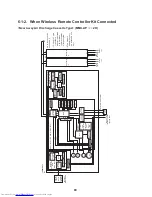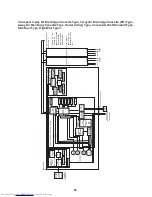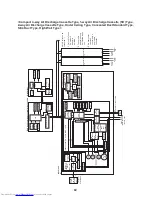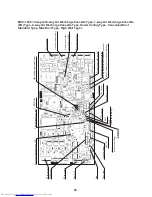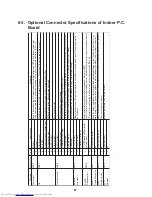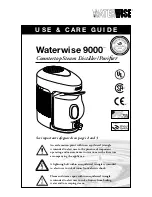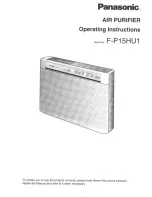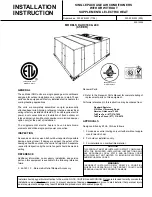
82
8. Release
valve control
(cont’d)
4. SV41, 42, 43 low pressure release control
This control function is aimed at providing low pressure protection, and is individually
performed by the header unit and each follower unit.
The control takes place during defrost operation, heating startup pattern control
operation, and cooling operation.
1) Control details (heating)
When Ps pressure becomes 0.1 MPa, SV41, 42 and 43 are opened; when Ps
pressure becomes 0.15 MPa, SV41, 42 and 43 are closed.
2) Control details (cooling)
When Ps pressure and Pd pressure become 0.14 MPa and 1.8 MPa,
respectively, SV41 and 42 are opened; when Ps pressure and Pd pressure
become 0.19 MPa and 2.2 MPa, respectively, SV41 and 42 are closed.
5. SV5 high pressure release control
This control function is aimed at mitigating pressure rise and is only performed by the
header unit.
1) Control details (heating)
When Pd pressure and compressor speed become 3.4 MPa and 38 rps,
respectively, during heating, with a single compressor in operation, SV5 is opened;
when Pd pressure becomes 2.7 MPa, or compressor speed 64 rps, SV5 is
closed.
9. High
pressure
release
compressor
shutdown
control
This control function is aimed at automatically shutting down a compressor in an
outdoor unit depending on Pd pressure. It is individually performed by the header unit
and each follower unit.
1) Control details
• Compressors are shut down when Pd pressure reaches or exceeds P0.
• The compressor restart prevention timer (2 minutes 30 seconds) is set, and the control
terminated.
• When Pd P0 = 3.45 MPa,
compressor No. 2 or No. 3
(the last one of three
compressors in terms of
startup order in a three
compressor configuration) is
shut down.
• When Pd P0 = 3.5 MPa,
compressor No. 1 (the first
compressor in terms of
startup order) is shut down.
10. Case
heater
control
There are two types of case heaters: a compressor case heater and an accumulator
case heater. This control function is aimed at preventing the accumulation of refrigerant
in those cases, and is performed by all outdoor units.
If the power supply has not been turned on for a specified period before a post-
installation test run, compressor failure may occur. Similarly, when starting
compressors after a long period of no power supply, it is recommended that the power
supply be turned on for a while before operation is resumed, just like a post-installation
test run.
This control function is sometimes used alongside an electrical charging of the
compressor motor windings. In this case, a charging sound may be heard, but this is
normal.
1) Control details
• The heaters are turned on while the compressors are turned off.
• The heaters are turned off when T0 sensor temperature becomes 28 °C, and are
turned back on when T0 sensor temperature becomes 25 °C.
• When the compressors are turned on, the heaters are kept on for 10 minutes.
Item
Description of operation, numerical data, and other information
Remarks









